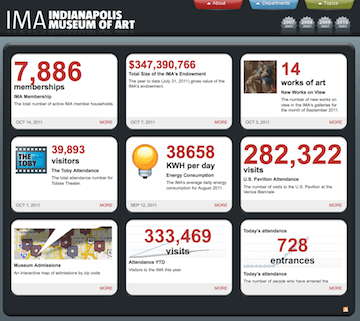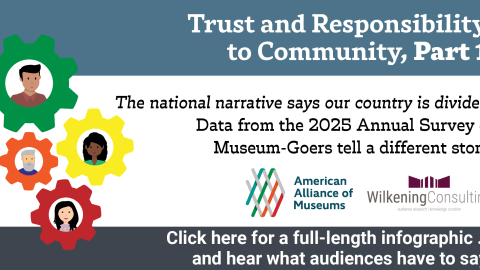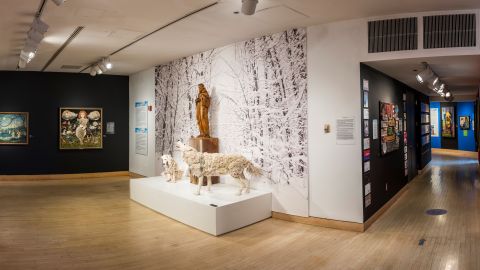
- Multi-mission Museums: Some museums welcome their richness of community services by recognizing their multiple purposes, rather than just one role as their “core mission” and calling all the rest “ancillary” or “mission-supporting.” Museums provide lots of community and individual benefits. Our mission may be most important to us, but other services we provide are important to the people who pay our bills. In the new economy, we have to get off the high horse of solitary mission, and focus on providing a variety of good value services that are needed enough to be funded by the community. With multiple funding sources, this means being intentional about serving multiple missions.
- Cultural Accommodation: I knew we would need to add prayer rooms to our project in Kuala Lumpur, but what a surprise that we might want to consider it in Edmonton! Immigration is turning growth cities like Edmonton global, bringing new expectations for human interaction, food choices, propriety, language, gender sensitivity, ‘family’ membership definitions and numerous other cultural accommodations way beyond writing labels in two languages.
- Grrrovernance (how Millennials, Boomers and their metrics are upsetting traditional board/staff territory lines): It used to be simple in theory: Boards set policy, raised money and hired and fired the director. Staff developed and implemented the strategies to carry out the policy, and staff delivered summary reports at quarterly meetings. Then came the demand for metrics and policy indicators from younger board members. During the white water of the recession, the indicators that mattered to the
board members we worked with were financial. Then came CEO dashboards that monitored how the museum was scoring at achieving policy, and then, soon thereafter, came transparency. Now, board members used to monitoring financials, can see your dashboard live, in real time. “Why were the membership renewal numbers down last week?” To staff, this looks a lot like micro-managing. To board members, it feels like responsible oversight. Middle ground is not yet in sight on this one.
b. Trends we think may lie ahead
- Boomer Volunteers (Yikes, they have purposes of their own!): Speaking as one, we Boomers have always been full of ourselves, and we will bring that bravado to our volunteer work. When it becomes our turn to give back – and most of us are in denial about when that will be — we’ll attach strings. We’ll want to address some of the societal needs we feel are important, and we’ll want to hang with interesting people. Should museums offer volunteers more structured opportunities where they can pursue their own thing using the museum’s platforms?
- The Food, Diet and Fitness Craze: Currently a top-of-mind public topic, judging by media attention – Celebrity chefs… Food fights on TV! And sex and food share the supermarket magazine rack. We run our own expensive arms race spending on both kitchen and exercise equipment. From on high, we get food and fitness pronouncements from Michele Obama, Mark Bitman and Bill Clinton. The topic is inherently multi-disciplinary, and most categories of museums can find a way in: “The Science of BBQ and Beer;” “Stories from the Grave: Exercise in Colonial New England;” “The Art of Buff: Nudes from Rubens to Mapplethorpe;” and “ObesityWorlds” – lots of possibilities….[For more on this emergent trend, see CFM’s “Feeding the Spirit: Museums, Food & Community” initiative, and the White House’s “Let’s Move! Museums and Gardens” campaign.]
- GPSification and “Placebook”: The crowdsourced story of an exact spot is already possible, and may allow open-source interpretation. An object on display has GPS coordinates that tomorrow’s mobiles can find, read and then add virtual post-its and links to that spot’s “Placebook” page. At a fine-grain resolution, folks nearby or in South Africa could tune into the Hope Diamond, or at a larger resolution, to a house and its stories. Elaine Gurian envisioned this in her “Essential Museum” article, which talked about opening up collections for user-based exploration and comment. Certain sites, like the Freedom Trail in Boston, might collect a sufficiently robust set of comments that people could filter by their interest: architectural details; Italian food sources; Patriots and Tories, etc.
- Brain Science is the New Space Race: Obama’s push for neuroscience research may offer major opportunities for museums. The human brain will reveal new information about how our brains work and how they can get stronger. There will be new self-tests and exercises that will be both fun and helpful, and museums can position themselves as places of structured stimulus – a mental Nautilus. How does your brain react to different exhibits? Different stories? Can you curate a gallery of paintings that will boost seratonin levels? Do you want visitors to bookmark the museum moments that most quickened their pulses? Remember how many planetariums were funded during the space race in the 60’s and 70’s?










Susan Magsamen at Johns Hopkins has done extensive work with children's museums. Her focus is on brain function and learning and she could be an asset in exploring this topic.
In regard to board members ability to track data such as membership slumps, this seems a real advantage for the development director and CEO as it presents an opportunity to create a board task force that meets immediately to research the issue, develop options, and help the board solve the problem. Problem solving is the real work of the board, but we have to invite them to participate in the right work.
Anita Durel
4120